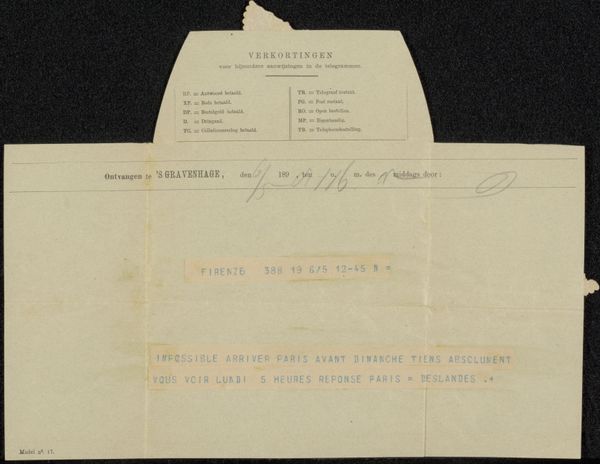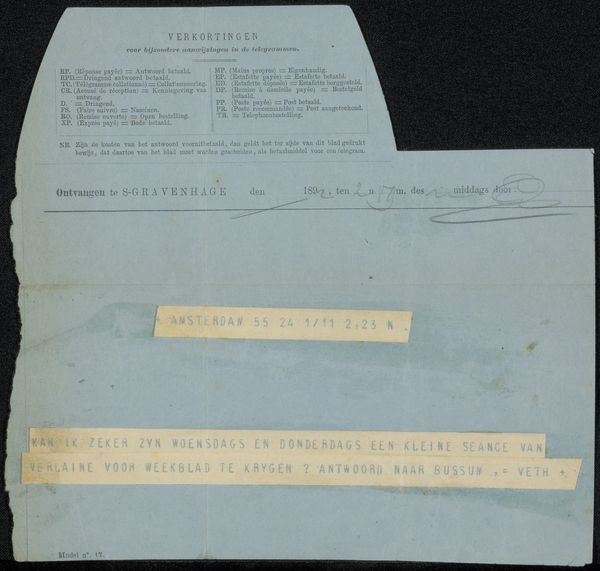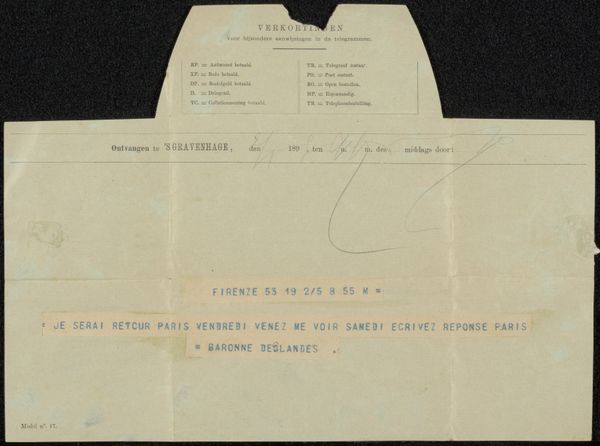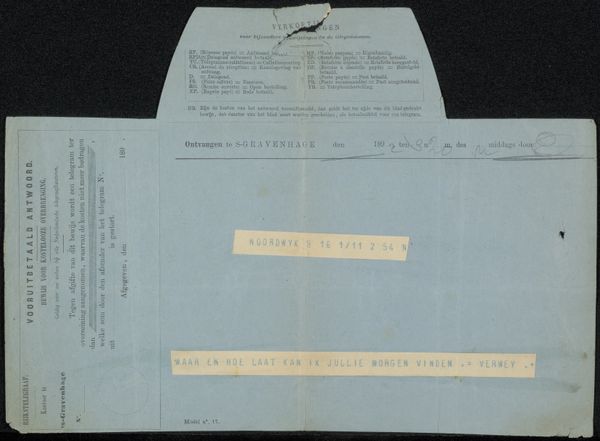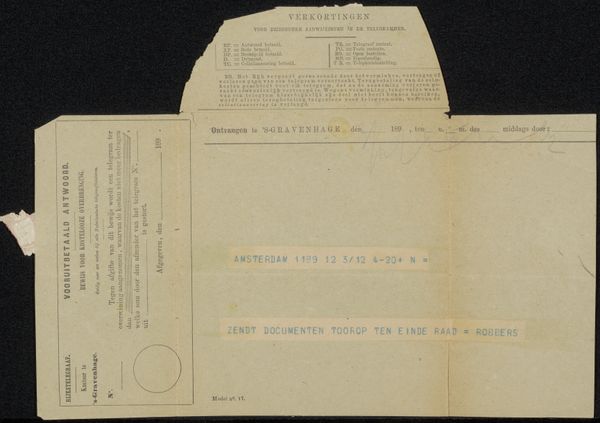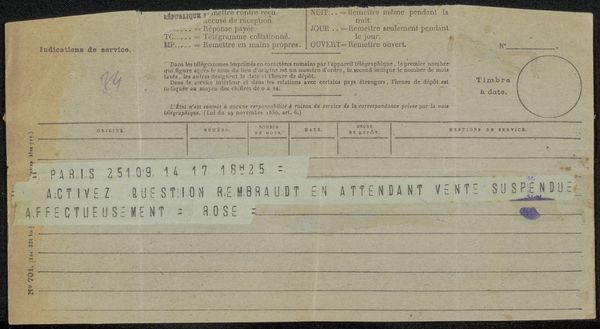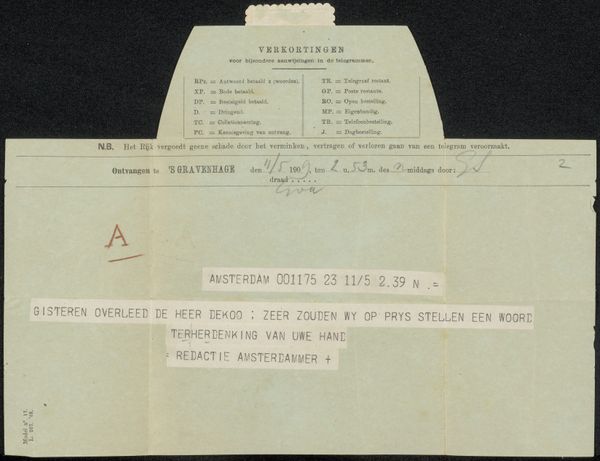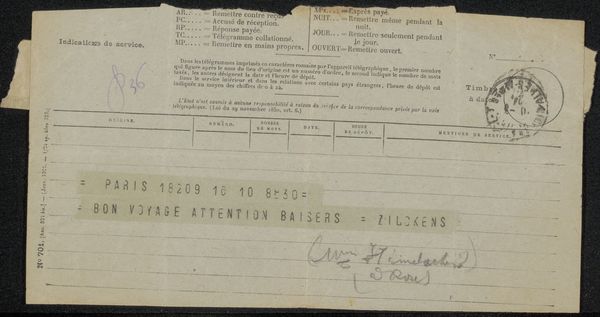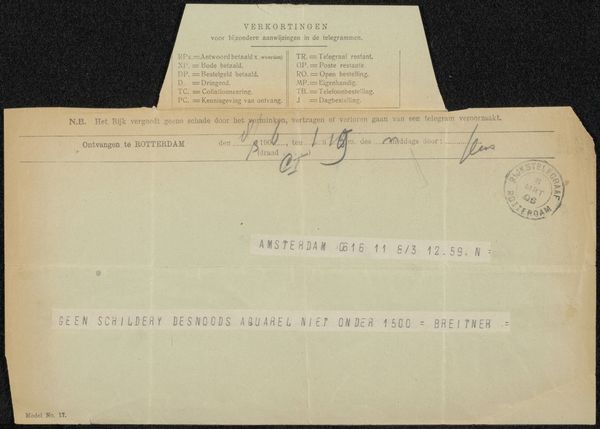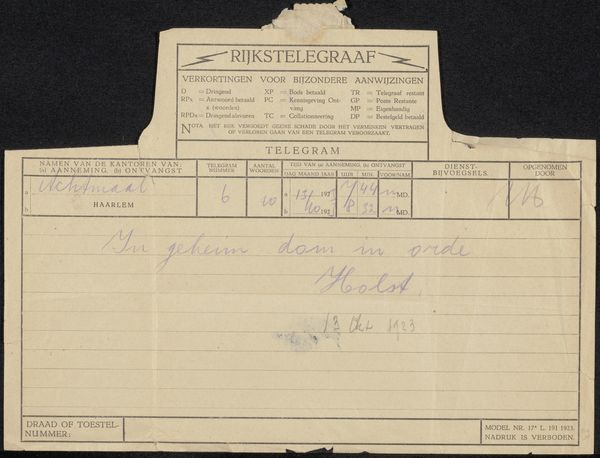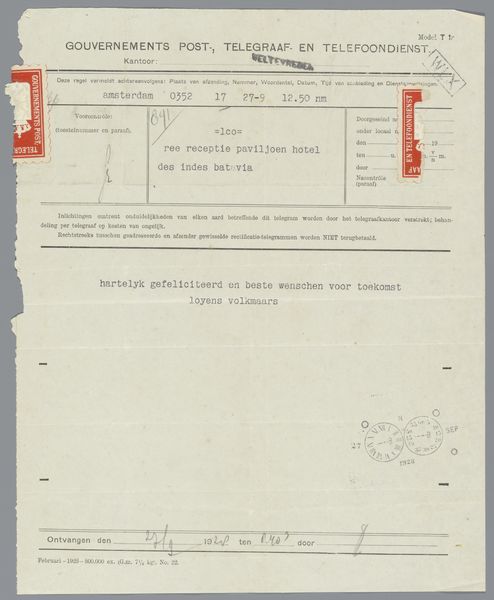
textile, paper, photography, ink
#
textile
#
paper
#
photography
#
ink
#
coloured pencil
Copyright: Rijks Museum: Open Domain
Editor: So, this is "Telegram aan Philip Zilcken," possibly from 1918. It uses a mix of materials—paper, ink, photography and maybe coloured pencil—it seems to be an image *of* a telegram? I’m struck by its fragility, the worn edges. It really feels like a found object, a piece of ephemera. How do you interpret a work like this? Curator: Precisely. Its existence begs several questions. Why preserve an everyday object? It speaks volumes about the period and its relationship with communication. Telegrams, in that era, carried urgent news. The cost meant it had some social value as well. But the preservation… that’s where it gets interesting. Editor: What do you mean? Curator: Well, consider the date: 1918. This telegram may relate to WWI in some way. The words "temps est trop mauvais" meaning "the weather is too bad," combined with a plea for a phone call, speak to perhaps travel restrictions, the anxieties of war, the dependence on limited modes of communication. Was Zilcken involved? Was it simply preserved for personal value at a later date, within a specific socio-political sphere of influence, or perhaps as source material for later reproduction? Editor: I see… it is kind of like a snapshot of a specific time and place. The everyday can carry significant historical weight. The choice to retain the artifact as 'art' changes its function. Curator: Exactly. This shift from everyday to ‘art object’ invites viewers to ask: what do we consider important, and why? It causes you to analyse its role as document, message, and… art. Editor: I hadn't considered it that way. It’s amazing how an image of such a mundane item can evoke so much context. Curator: Absolutely, and this dialogue allows that wider view. This little scrap of paper offers a powerful way to visualise global events on a personal level.
Comments
No comments
Be the first to comment and join the conversation on the ultimate creative platform.
